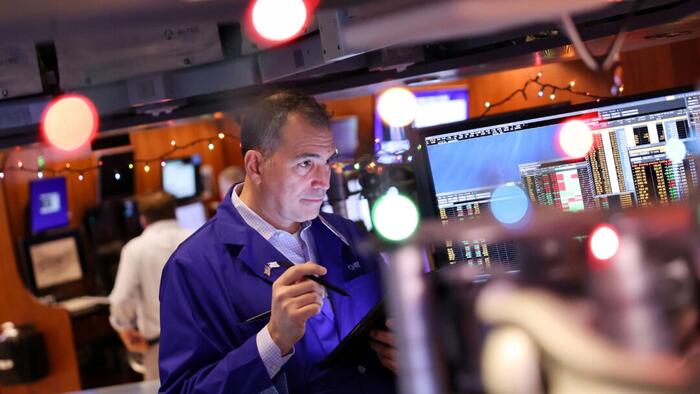In recent years, the New York Stock Exchange has experienced remarkable volatility, reminiscent of the intensity of Spain’s running of the bulls. The Nasdaq Composite Index recently reached a significant milestone, closing above 20,000 for the first time, indicative of a broader bullish sentiment in the market. Likewise, both the blue-chip Dow Jones Industrial Average and the S&P 500 have hit unprecedented levels, closing above 45,000 and 6,000 respectively. President Joe Biden has applauded these achievements, viewing them as a testament to confidence in the U.S. economy, citing record highs in stock market performance and 401(k) accounts. This robust performance in various asset classes—including Bitcoin surpassing $100,000 and gold reaching $2,800—has reflected a general uptrend since the pandemic, despite the turbulence experienced during that period.
The remarkable recovery in stock prices can be traced back to the lows seen in March 2020 during the pandemic-crashed market. The recovery has been steep, with the Dow Jones and Nasdaq climbing approximately 136% and 192%, respectively, while the S&P 500 increased by around 168%. Investment strategists are still optimistic about continued growth. Rob Haworth from U.S. Bank Asset Management suggests there remains further upside potential, despite the significant gains recorded over the last two years. Concurrently, investors have reshuffled their strategies, holding more equities alongside cash, which has regained favor due to the attractive yields from money market accounts—reaching around 5% for the first time in decades.
Despite the flourishing market, the backdrop of a bear market—where indices fall by at least 20%—remains a crucial part of the narrative. Such a bear market occurred in 2022, characterized by market anticipations of a recession driven by monetary tightening efforts from the Federal Reserve. Investors grappled with inflationary pressures, supply chain disruptions, and geopolitical tensions. However, as the markets transitioned into 2023, a wave of optimism replaced earlier fears, with indicators of disinflation and advancements in artificial intelligence driving investor sentiment. This shift contributed to a renewed bullish perspective on the stock market, which has remained buoyant amid geopolitical uncertainties.
Inflation has been a key theme in the analysis of stock market performance, often overshadowing nominal gains. While the markets boast impressive growth figures, real returns adjusted for inflation tell a more nuanced story. The real five-year returns highlight a more tempered performance—18% for the Nasdaq and 10% for the Dow Jones. Inflation impacts the purchasing power of these gains, necessitating higher investment returns to maintain standards of living. This situation particularly concerns middle-class investors who aim for a stable retirement amidst these economic fluctuations and emphasize the importance of inflation in financial decision-making.
The effects of monetary policy, particularly from the Federal Reserve, also warrant closer scrutiny. The proverbially “long and variable lags” in policy effects, as noted by economist Milton Friedman, have been brought into question in the context of the pandemic. The Fed’s intervention strategies—such as aggressive rate cuts and quantitative easing—triggered a swift market response following the initial pandemic-induced downturn. However, this responsiveness presents complexities as the Fed signaled impending rate hikes to control inflation, inadvertently leading to a bear market. Economists now reconsider the traditional lag time in response to the Fed’s proactive communication strategies, which significantly prepped the markets for anticipated changes.
As Wall Street projects into the future, particularly looking ahead to 2025, the prevailing sentiment leans toward continued growth, albeit with caution. Analysts are optimistic that the S&P 500 may rise to nearly 6,679, fueled by advancements in sectors such as health care, materials, and energy. However, experts also advise a mindful approach to risk-taking, especially during a time of diverse economic currents and policy maneuvers. Balancing optimism with prudence is vital for investors navigating a landscape marked by both opportunities and setbacks as the market evolves through shifting economic conditions.

